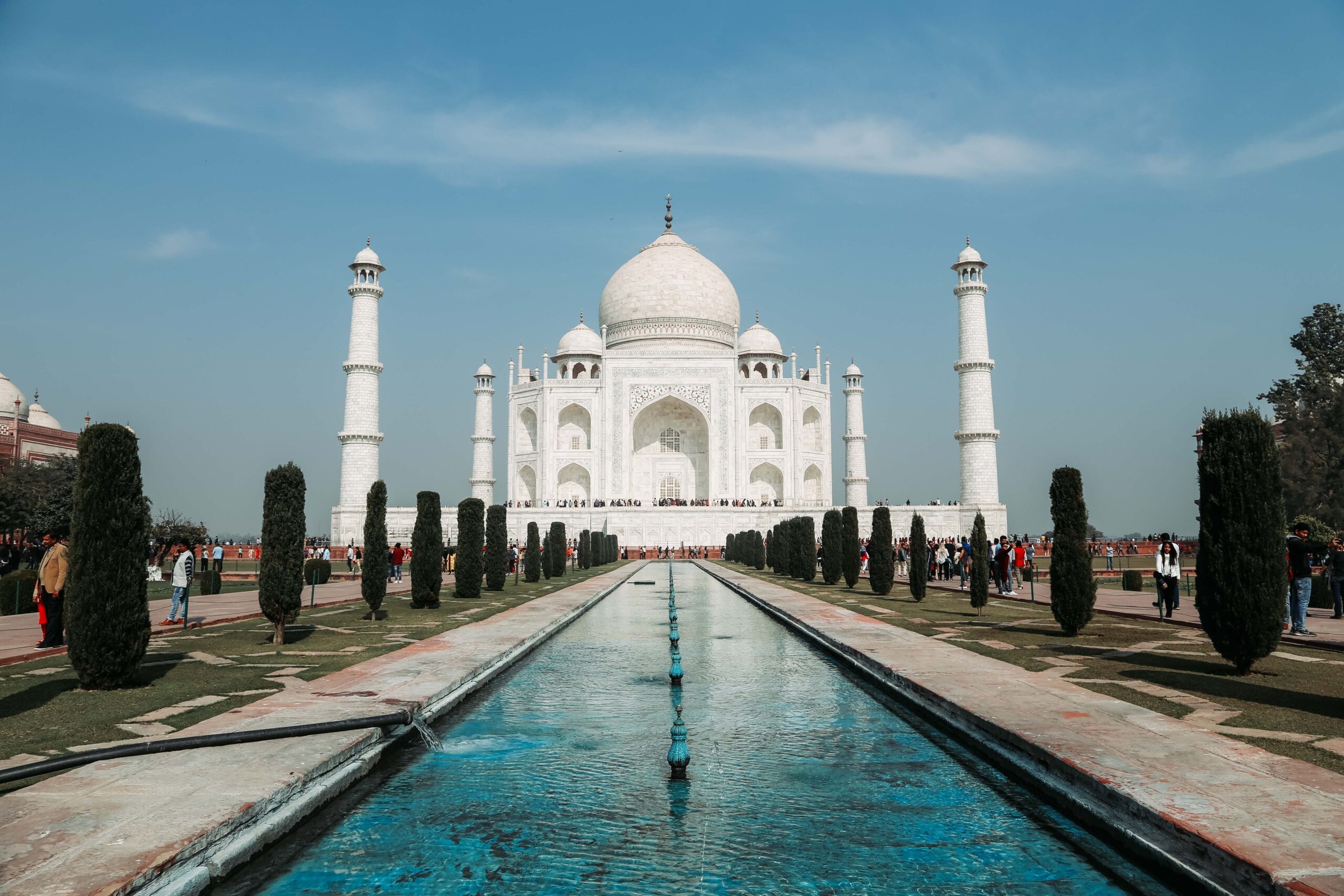Taj Mahal is one of the most attractive Indian iconic landmarks. It is a symbol of love and eternal beauty, and its breathtaking architecture and intricate design continue to awe visitors from throughout the world. The fascinating background of the Taj Mahal, its location, and what makes it one of the most well-liked tourist attractions in India will all be covered in this piece.
The Story of the Taj Mahal
In honor of his adored spouse Mumtaz Mahal, Mughal King Shah Jahan made the Taj Mahal. Mumtaz Mahal passed away while delivering birth to the 14th child, and her passing grieved Shah Jahan. To honor her memory, he decided to build a mausoleum that would be as beautiful and everlasting as their love.
The Taj Mahal was built starting in 1632 and was finished in 1653. The project employed over 20,000 workers from all around India and Central Asia, and it is said that the laborers worked tirelessly for over 20 years to complete the structure. One of the best specimens of Mughal architecture is the Taj Mahal, a design that blends Islamic, Indian, and Persian influences.
Where is the Taj Mahal?
The Taj Mahal is situated in Agra’s metropolis, the state of Uttar Pradesh province of northern India. It is situated along the Yamuna River’s shores, which adds to the serenity and beauty of the surroundings. The Taj Mahal is part of a larger complex that includes a mosque and a guesthouse, both of which are built from red sandstone. The complex is surrounded by gardens that were designed in the traditional Mughal style, with fountains and water channels that add to the charm of the place.
Taj Mahal Inside
The Taj Mahal’s interior is just as stunning as its outer appearance. The foremost chamber, where Mumtaz Mahal is buried, is embellished with fine sculptures and priceless stones. The walls and ceilings are covered with floral motifs and calligraphy, which are typical of Mughal art. The tomb of Shah Jahan, which is located next to that of Mumtaz Mahal, is equally impressive, with a similar level of detail and craftsmanship.
The Taj Mahal is also home to several other buildings, including a mosque and a guesthouse. The mosque, which is located to the west of the Taj Mahal, is made from red sandstone and is decorated with intricate carvings. The guesthouse, which is located to the east of the Taj Mahal, is also made from red sandstone and is decorated with delicate carvings and inlaid patterns.
Preserving the Taj Mahal for Future Generations
The Taj Mahal is an embodiment of the strength of beauty and affection. It is a magnificent illustration of Mughal construction and a sign of the rich cultural heritage of India. The Taj Mahal’s beauty has inspired poets, artists, and travelers for centuries, and it continues to be among the most popular tourist destinations in Bharat.
The Taj Mahal visiting is an experience that is not to be missed. It is a place that transports visitors back in time, to a world of elegance and grandeur. The serene surroundings, intricate carvings, and sheer scale of the structure leave visitors awestruck. The Taj Mahal is a must-visit destination for anyone who loves architecture, history, and beauty.
However, it is important to note that the Taj Mahal is a fragile structure that needs to be preserved for future generations. The pollution and crowds that are associated with tourism can have a detrimental effect on the monument. To ensure that the Taj Mahal remains a symbol of love and beauty for years to come, visitors need to respect the rules and regulations that are in place to protect the monument.
Conclusion
In conclusion, the Taj Mahal is a masterpiece of architecture, a symbol of eternal love, and a testament to India’s rich cultural heritage. Its beauty and grandeur continue to attract visitors from all around the world, and it remains one of the most iconic landmarks in India. A visit to the Taj Mahal is an experience that is not to be missed, and it is sure to leave a lasting impression on anyone who visits.
To read this type of article, click here.





Very lovely building with its lovely story